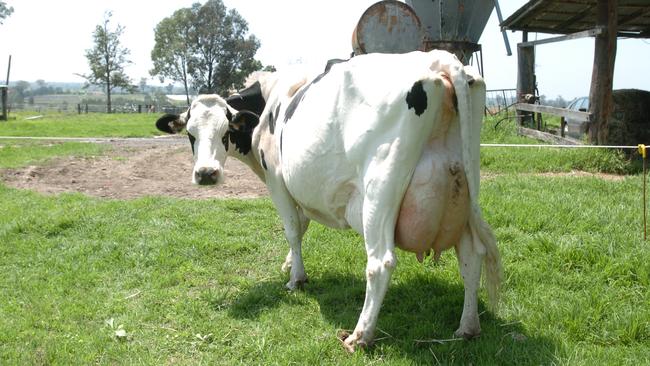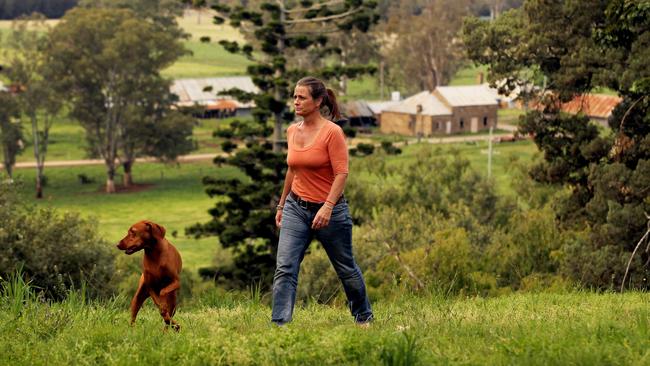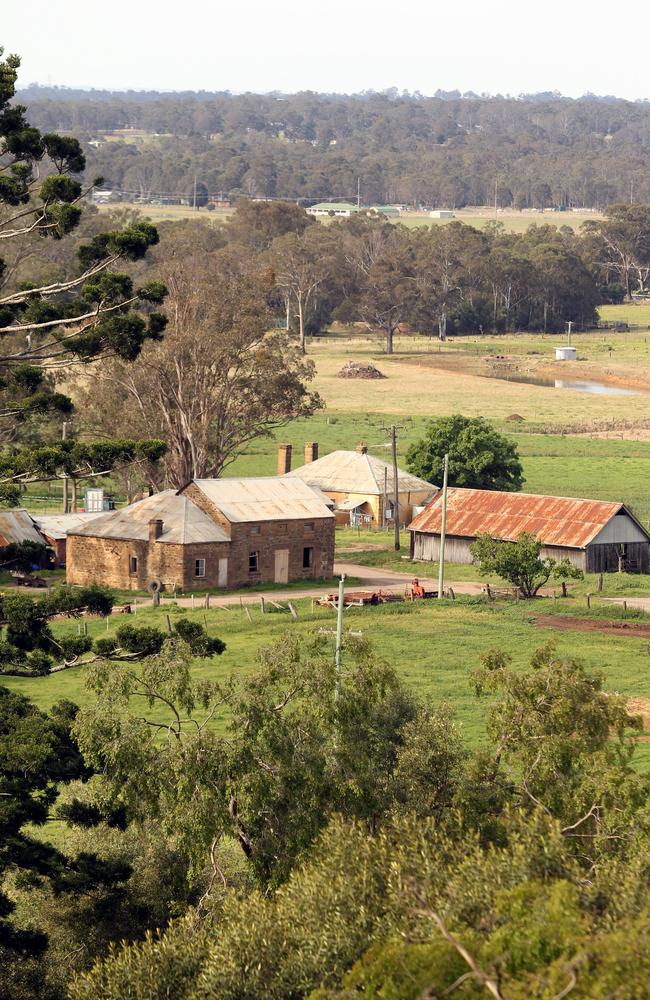New housing precinct will incorporate historic dairy farm
WITH news that historic dairy farm Maryland, at Bringelly, is set for housing, it’s a chance to revisit the contribution of that property to the Australian dairying industry.

Macarthur
Don't miss out on the headlines from Macarthur. Followed categories will be added to My News.
WITH the release last week of a draft masterplan for a future housing precinct encompassing the historic Maryland property, the contribution of that particular farming land to Australia’s dairying industry cannot be underestimated.
The Lowes Creek Maryland Precinct, near The Northern Rd in Bringelly and about 10km from Oran Park, will eventually house more than 20,000 people.
The Planning and Environment Department has promised three significant heritage sites within the proposed development area — the Maryland homestead, Birling buildings and Birling homestead footings — will be preserved, with plans in place to provide public access to the landscaped grounds.
The draft masterplan includes 63ha of open space and 60ha of riparian corridors.
As the process continues, old-timers who remember the days of dairying and the Thomson sisters, in particular, will be hoping their legacy will be honoured within the development, and not forgotten the community at large.
Annette and Elizabeth Thomson continued their family’s dairying tradition on Maryland well into their 90s.
Here is a newspaper article from 2004 when they both were given an OAM in recognition of their contribution to the dairying industry.

THERE was a time when sisters Annette and Elizabeth Thomson wouldn’t think twice about leading a 500kg bull around a showring.
But now, aged 82 and 84, life is a bit slower for these two dairy farmers.
The Thomson sisters have dedicated most of their lives to the Australian agricultural show movement and today their dedication is rewarded with each receiving the Medal of the Order of Australia.
The gongs are for ``service to the agricultural show movement, the dairy industry, particularly through the Holstein-Friesian Association, and to the community’’.
Speaking from her farm Maryland at Bringelly on Sydney’s southwestern outskirts, Annette Thomson said she and her sister were delighted with the awards.
``We’re very, very proud for us to be selected like that,’’ she said.
The sisters were founding members of the Cobbitty Pony Club, and until recently, allowed the club to conduct its operations on their land.
``At the moment, insurance is a big problem,’’ Ms Thomson said.
The women continue to operate a dairy farm on the property, despite their age and the urban sprawl.
``We’re producing whole milk here,’’ Ms Thomson said.
``We’ve had to cut it back because of civilisation encroaching closer and closer on us but we have 120 or 130 cows here.’’
The women have been showing cattle at the Royal Easter Show every year for more than 40 years — but lately they have relied on others to walk the animals around the ring.

The Planning Department has a Statement of significance posted on its website about Maryland.
Maryland is State significant as a highly intact major mid-19th century rural estate, built on an 1816 grant of 3000 acres within the Cumberland Plain which continues as a working estate.
It is closely associated with two families, that of prominent 19th century engineer, businessman and philanthropist Thomas Barker who established the estate from 1857, as well as his son and local identity, Thomas Charles Barker. The estate was then occupied by the Thomson family from 1910, particularly by Annie and Elizabeth Thomson, who were prominent in the local community and the dairy industry. The Barker and Thomson families owned Maryland until 2012, while members of the Thomson family continue to live in the homestead, a total of c. 160 years of continuous occupation by two families.
It occupies a prominent hilltop location forming an important reference point in the local area, further emphasised by the conspicuous old Araucaria pine plantings and gate lodge along the Northern Road. The homestead and associated estate layout, gardens and plantings have characteristics of the Summit Model of homestead siting within an intact rural landscape setting fundamental to its interpretation. The traditional rural landscape character and its setting is largely uncompromised.
Maryland retains the nineteenth century estate layout and design by engineer Thomas Barker and his son Thomas Charles Barker. It contains an outstanding group of estate buildings including homestead, two gatehouses, winery buildings, a home farmhouse and associated stables and coach house, store building, several dairy buildings, a hay barn and many minor structures. The winery and store may be the oldest surviving winery buildings in Australia
Maryland is a rare example of mid-19th century garden design and remains an historical resource in its remnant gardens and vineyards. Other historically related rural landscape elements beyond the homestead may still be appreciated in relation to it, including the driveways, home farm, creek lines, fence lines, in a considered arrangement. It retains important traditional historic views to and from The Northern Road.

The potential archaeological remains at Maryland are likely to include material associated with domestic occupation of the Barker and Thomson families, their household staff/servants, the archaeology of the workers and their families, notably those of German heritage, the nature and use of the winery and farm buildings and the landscaping of the garden and extensive remnant vineyard fields. This has created a complex and layered landscape: much of which is visible but there are also buried and disused aspects of the place which archaeological analytical and spatial approaches could allow for further definition and understanding.
The potential archaeological remains have historic significance through their association with larger themes including the development of wine growing and dairy farming in the local are, German migration to NSW and everyday life on a large farm and ‘gentleman’s estate’. They also have archaeological research significance through their ability to address various research questions related to rural domestic life, farm and winery practices and technology, and the rural landscape.
The potential archaeological remains could provide material for comparisons both within different houses on the site, and with other sites.
It offers an outstanding landscape archaeological resource with its extensive remnant vineyard fields and other remnant functional and ornamental plantings. It has high potential to yield information about the technology of nineteenth century building construction and the function of farm buildings.
The estate is highly representative of a nineteenth century estate, being complete, integrated in design and intact
(Source: Hector Abrahams Architects, 2018, 18).
